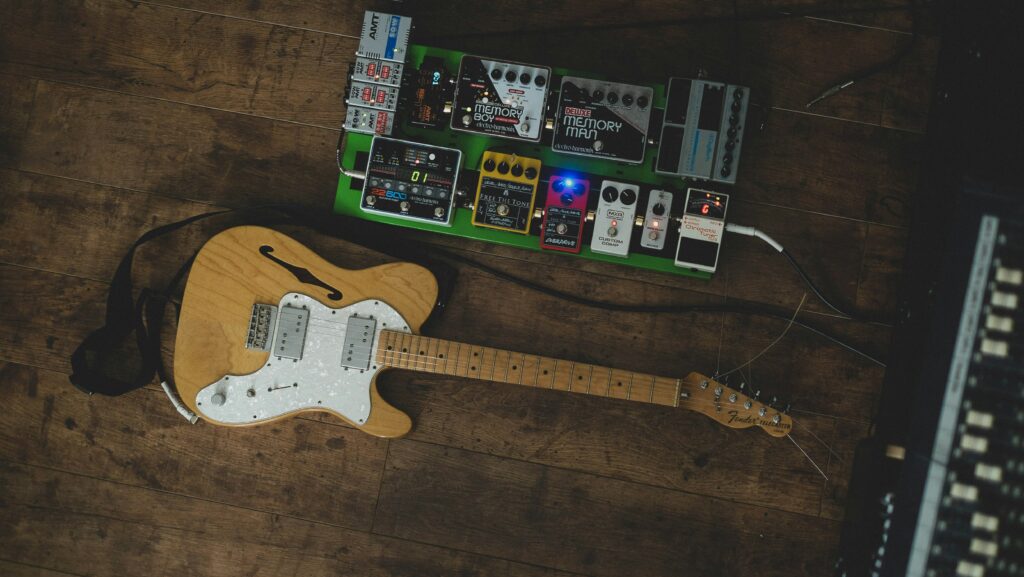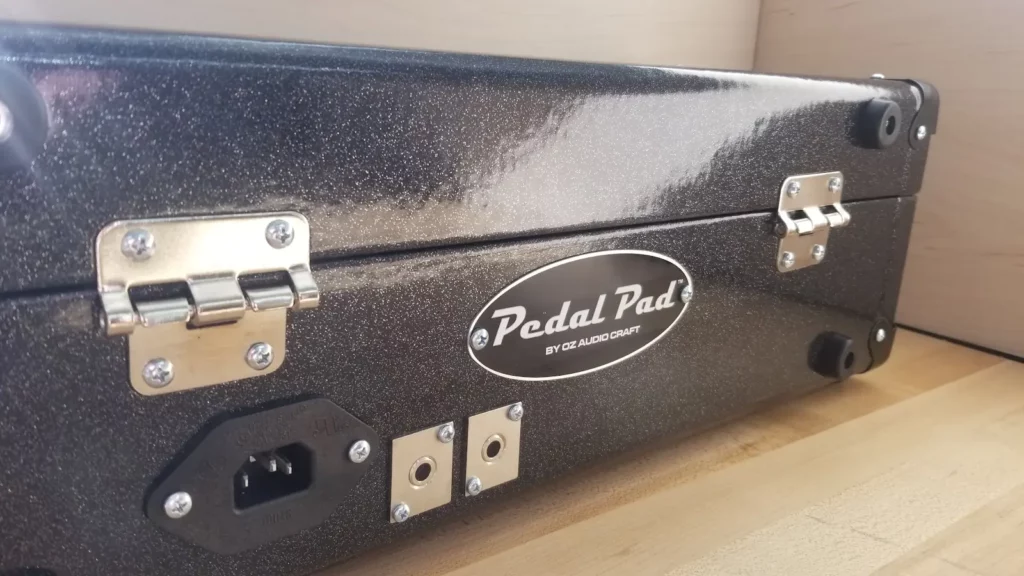
Pedal boards are an essential part of any guitar player’s rig, but that doesn’t mean they don’t have their problems. After all, pedalboards are complicated pieces of equipment, and with so many interconnected parts, problems like unwanted noises can leave many guitarists wondering, “Why is my pedal board buzzing?”
Whether your building your own board from scratch or just throwing a few of your favorite pedals on a stock board, just knowing how to use a pedal board isn’t enough. From setting up a pedal chain to figuring out how to power everything, you need to know exactly how every piece of your board works and connects if you want to avoid unwanted noise and truly dial in your tone. So, just what causes pedalboard buzzing and what can you do to fix it?
From power supply issues and ground loops to lengthy pedal chains, noisy pickups, and even problems with individual pedals themselves, there’s no shortage of reasons why your pedalboard might be producing buzzing or humming noises. But, unfortunately, that means that figuring out just what is causing all that noise can be half the battle.
The only way to find out and fix what’s causing your noise problems is essentially through guess and check. So, you may have to spend a decent amount of time playing around and experimenting with all the different components of your board before you’ll be able to fix it.
However, while there are plenty of things that can cause pedalboard buzzing, the vast majority of cases have to do with power supply issues, so if you’re experiencing pedalboard noise problems, your power supply is the best place to start.
Problems with pedalboard buzzing can be incredibly annoying, but luckily, there are plenty of proven methods for limiting unwanted noise. It all just depends on what is causing the problem in the first place.
For example, if you happen to already know that you have a particularly noisy pedal that is causing most of your buzzing problems, then start there. But if you aren’t sure what’s causing the problem and don’t know where to start, here are all the ways that you can get rid of unpleasant buzzing noises and get back to sounding your best.
The most common cause of unwanted pedal board buzzing has to do with how you power your pedals. Daisy chains, in particular, tend to cause a lot of problems because they are prone to providing uneven power and creating ground loops that cause extra buzzing and humming noises.
While daisy chains are convenient for beginners, any seasoned guitar player will know that utilizing an isolated power is the best way to go. Not only can they provide sufficient power for all sorts of different types of pedals, but they don’t create ground loops, keeping your pedals free from any potential buzzing and humming problems.

Every guitar player knows that the pickups are responsible for capturing the sound of the guitar as you play. They essentially convert the sound of your strings vibrating into an electrical signal that is sent through your pedal chain and out your amp. The only problem is that this signal can include a lot of unwanted hissing and humming and will gradually reduce in quality the longer the pedal chain is.
An easy fix is to add a buffer pedal at the beginning of your pedal chain. Not only do these buffer pedals often include noise filtering measures, but they also increase the quality of your tone, ensuring that you can get the sound you want without any of that annoying hissing and buzzing.
Louder pedals like distortion, overdrive, and fuzz pedals often produce a lot of background noise, even when they’re turned off. Noise gates provide a simple solution to this by simply blocking out that extra background noise when the pedal is not in use. Some modern distortion pedals even come with noise gates built-in, making it even easier to eliminate this source of unwanted noise.
As mentioned above, daisy chains can cause problems because they can create ground loops that produce humming and buzzing sounds. However, that’s not the only common way that you may accidentally be creating a noisy ground loop.
If you plug your amp and board into two separate outlets, you will also create a pesky ground loop that can muddy your tone and increase annoying humming and buzzing. So, no matter where you set up next, avoid accidentally creating ground loops like this when plugging in your equipment.
Some pedals are just particularly noisy, but that doesn’t mean you have to let all that noise go through the rest of your pedal chain. Older pedals and high gain distortions tend to be the noisiest, and if you have a pedal like this, the best thing you can do is isolate it using a true bypass loop.
Learning how to organize a pedal board like this can be a bit challenging at first. However, with a bit of planning, these pedals essentially let you isolate certain effects pedals from the rest of your chain when not in use, making it well worth the effort. With a good true bypass loop, you can easily cut out unwanted noise from especially loud pedals without having to mess with the rest of your pedal chain.

Are you in the market for a new pedalboard? Build your own custom pedalboard with Pedal Pad.
Pedal Pad pedalboards are the one and only custom pedalboard hardcase solution, allowing players to build a board that’s fine-tuned to their specific needs. And, with plenty of room for integrated power supplies and optional features like built-in power inlets/outlets and switches, preventing unwanted power supply-related board noise has never been easier.
So, don’t put up with some regular old mass-produced board. Contact Pedal Pad and build your dream pedalboard today!